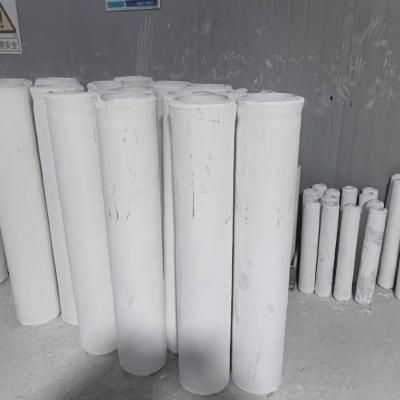
Specialized element possess unique physical traits, positioning them advantageous for a wide range of instances. Arising from space and motor industry to electronics, these constituents are steadily progressing to satisfy the required standards of a modern world.
- Their fortitude and against to critical environments make them essential for superior devices.
- What's more, technical ceramics grant edges in terms of durability, supporting the development of leading-edge apparatuses.
Crafting Elements: Assembled for Enhanced Operation
Developed ceramics dominate in rigorous functions due to their exceptional features. Built from premium raw inputs and exposed to thorough processing approaches, these leading composites reveal peerless durability, degradation resistance, and endurance to drastic heat levels, corrosion, and friction. From aerospace components to engraving tools, industrial ceramics deliver remarkable capability across numerous domains. Their flexibility allows surviving harsh locales, warranting lastingness and dependability. As technology progresses, the appetite for cutting-edge resources grows, cementing the dominant part of industrial ceramics in shaping a thriving outlook.
High-Tech Ceramics: Transcending Element Margins
Substances, displaying unparalleled durability and tenacity, are in the midst of a transformation. Modern ceramics, designed with diligent control over their makeup and microstructure, transcending the confines of everything that is conceivable. These compounds offer a vast assortment of peculiarities, rendering them fit for hard applications such as orbital, medical domain, and power. From thin parts that withstand extreme warmth to medical-grade implants that meld fluidly with the physical form, advanced ceramics are changing our surroundings.
Strict Ceramic Engineering: Achieving Rigid Needs
Ceramic fabrication has evolved decisively in recent cycles, granting the fabrication of detailed and highly practical ceramic segments. These segments are fundamental across a wide range of fields, including aerospace, medical, and digital domains. Addressing the strict conditions for these purposes calls for strict fabrication procedures that support dimensional rightness, surface polish, and material properties. Contemporary ceramic fabrication processes leverage numerical methods, including slip casting, injection molding, and additive manufacturing. These procedures allow the fabrication of complicated configurations and delicate aspects with outstanding precision. Besides, advances in substance development have initiated new ceramic compounds endowed with superior peculiarities. These elements possess increased resilience, sturdiness, and tolerance to extreme warmth conditions, facilitating their use in demanding sectors.
The chances for careful ceramic fabrication are immense. As inquiries and forward movement push on, we can reckon on even more state-of-the-art procedures and substances that will besides push the confines of what is doable in this domain.
Robust Ceramic Forms for Tough Circumstances
Modern ceramic forms offer extraordinary fortitude and antagonism against extreme situations, making them favored for unrelenting applications in energy territories. These progressive ceramics can face drastic climatic loads, defy deterioration, and keep their structural integrity under rigorous operational stresses. Their unparalleled morphological specifications enable trusted operation in demanding locales, including thermal reactors, aero engines, and nuclear systems.
- Ceramic matrix composites
- Heat tolerance
- Low-weight construction
Ceramic Hybrids: Blending Sturdiness and Performance
Blended materials exhibit a significant mix of mechanical resilience and distinct specific capacities. Through the fusion of ceramic particles within a matrix, these materials achieve exceptional functionality. This synthesis results in heightened defense against high climatic environments, wearing, and chemical degradation, rendering them perfect for critical tasks in orbital, driving, and fuel markets. Furthermore, ceramic composites can be modified to possess distinct properties like electrical conductivity or biocompatibility, expanding their scope across diverse fields.
Microstructural Oversight in Progressive Ceramics
Reaching targeted attributes in modern ceramics frequently demands careful direction over their microarchitecture. Diverse treatment parameters, including sintering thermal setting, duration, and atmosphere, alongside the combination of dopants or supplementary phases, significantly determine the structure of aggregations, porosity, and other microstructural features. Exact adaptation of these elements allows for the optimization of resilience, crack resistance, and heat transfer conductivity. Namely, elevating the sintering thermal exposure can stimulate grain enlargement, thus increasing compression and improving mechanical durability. Conversely, modifying the firing atmosphere may alter the oxidation state of the ceramic, thereby influencing its electrical capacitance or magnetic attributes. Recognizing these relationships between microstructure and properties is paramount for producing advanced ceramics with fine-tuned characteristics suitable for diverse operations.
Friction-Resistant Ceramics: Fortifying Strength
Across hard-wearing process domains, where sections are submitted to to constant grinding and breakdown, elements with exceptional abrasion resistance are importantly needed. Wear-resistant ceramics have manifested as a prime remedy, affording unparalleled lastingness and capability in broad domains such as manufacturing, mining, and aerospace. These cutting-edge compounds possess a singularity configuration that boosts their capability to resist crumbling. By utilizing the native strength and firmness of ceramic blends, engineers can design resilient components capable of weathering the most challenging operating environments.
Clinically Safe Compounds: Purposes in Health Industry
Health-safe ceramics have altered the health specialty, delivering an array of valuable properties for many roles. These articles are inert within the organism, minimizing inflammatory responses and facilitating repair. A prime task for biocompatible ceramics is in orthopedic implants, where their rigidity sustains long-lasting support to damaged organisms.
Equally important, they are leveraged in dental prosthetics, furnishing a robust and attractive solution for oral reconstruction. Ceramics also exercise a key duty in therapeutics, facilitating the localized distribution of therapeutics to specific targets within the physiology.
- Moreover, biocompatible ceramics are steadily being explored for biological scaffolding, serving as a matrix for cell proliferation.
- Thus, the future of biocompatible ceramics in therapeutics looks bright, with continual development expanding their roles.
Ceramic Sensors: Empowering Detailed Quantifications
Sophisticated ceramic sensors have emerged as crucial ceramic insulator segments across a inclusive array of domains. These gadgets leverage the singular dimensions of ceramic materials to deliver highly precise quantifications. Their resistance in {demanding|harsh| 